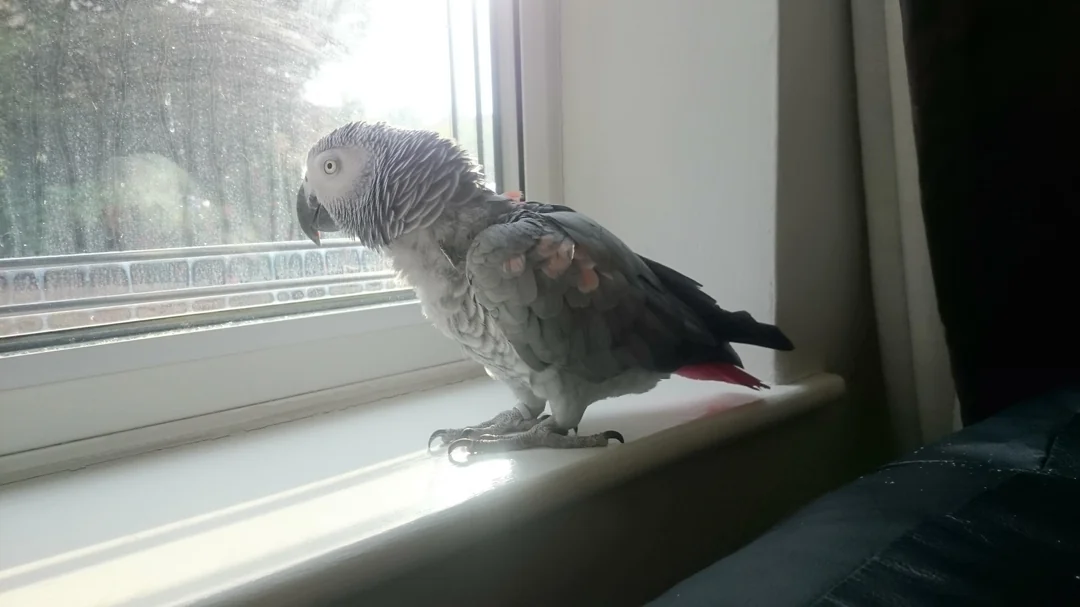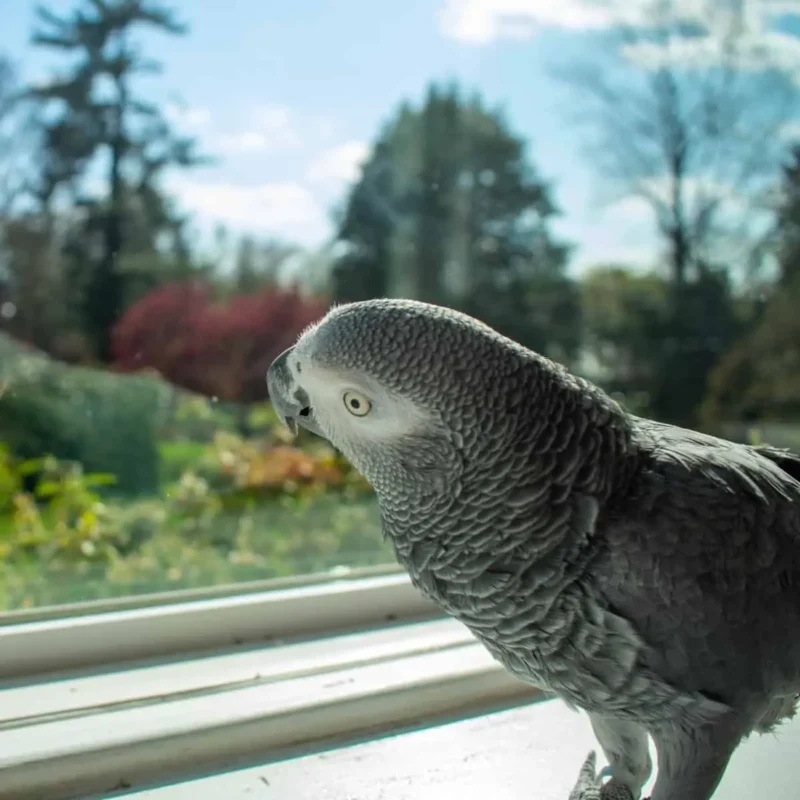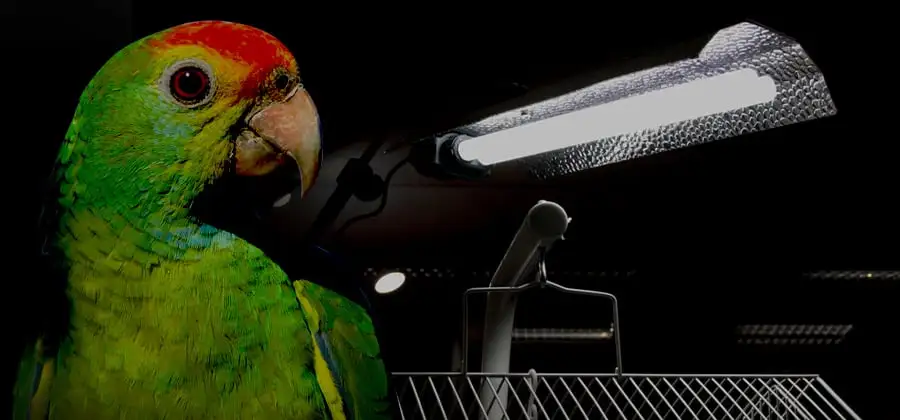Health & Care, Blogs
Parrots and Sunlight: How Their Feathers Absorb UV Rays
Did you know that about 95% of the sun’s radiation is UVA light? This light is key for parrots’ health and happiness. Parrots use their feathers to get the UV rays they need. This helps them make important nutrients and stay healthy.
In places with little sunlight, like during winter, birds can get sick or act differently. So, it’s vital to know how parrots get sunlight through their feathers.
Not getting enough sunlight can make parrots aggressive, sad, or have bad feathers. Most indoor lights don’t give the right UV rays. But, special lights and being outside can help. This article will explain the importance of UV light and how to make a great home for your parrot. Knowing about avian sun absorption and feather UV protection is crucial for your parrot’s well-being.
Key Takeaways
- UVA makes up 95% of sunlight, which is vital for parrots.
- Not enough UV light can cause health and behavior problems in parrots.
- Parrots use their feathers to absorb sunlight, which affects their nutrient making.
- Special lights can replace natural sunlight for indoor parrots.
- Creating a good home helps your birds stay healthy.
Importance of Sunlight for Parrots
Sunlight is key to keeping your parrot healthy and happy. It helps them absorb avian sunlight energy, which boosts their overall health.
Health Benefits of UV Light
Parrots make vitamin D when they’re in the sun. This vitamin is crucial for their bones and metabolism. It helps them absorb calcium, preventing issues like brittle bones and egg-binding in females4.
Also, enough parrot sun exposure makes them feel better mentally. It helps them eat more and keeps their feathers looking great.
Consequences of Insufficient Sun Exposure
Not getting enough sun can be bad for parrots. They might become more aggressive and start plucking their feathers. Plus, they could get sick from not making enough vitamin D.
Role of Vitamin D in Parrot Health
Vitamin D is key for parrots to process calcium right. Not having enough can cause big health problems. Different birds need different amounts of light; some might need full spectrum lighting for a few hours a day.
Make sure your parrot gets both real sunlight and artificial UV light. This helps them live a better life and longer5.
How Does a Parrot Get Sun Through the Feathers
Parrots have evolved feathers that protect and let sunlight in. Their feather structure helps them absorb UV rays. This is key for making Vitamin D, which keeps parrots healthy.
The Structure of Parrot Feathers
Parrot feathers are made to catch sunlight and protect the bird. They have a central shaft and barbs that spread out. Over 50 bird families sunbathe, showing how important sunlight is for birds.
UV Light Penetration and Absorption
When parrots sunbathe, UV rays go through their feathers to their skin. This makes Vitamin D, which is good for their bones. Sunlight also warms their feathers a lot, up to 140–160 degrees Fahrenheit in 10 minutes. This heat helps fight off lice, showing sunlight’s many benefits for parrots.
| Feather Feature | Function |
|---|---|
| Rachis | Central shaft providing structure and support |
| Barbs | Extend from the rachis to capture UV rays |
| Preen Gland | Produces oils for feather maintenance and UV protection |
| Coloration | May assist in UV light reflection or absorption |
Learning about feather structure sun absorption shows how parrots use sunlight for their health.
In short, parrot feathers do more than just look good. They let in UV rays, which are vital for their health and energy.
Understanding UV Light Types: UVA and UVB
Knowing the difference between UVA and UVB light is key for your parrots’ health. Each type of ultraviolet light has its own role in keeping these birds healthy. It helps them absorb nutrients and see the world around them. Learning how sunlight affects bird feathers can help you create a great home for your birds.
Differences Between UVA and UVB Light
UVA light makes up about 95% of the sun’s radiation, but it’s not as strong as UVB. UVA goes through glass, but UVB gets blocked, stopping birds from making Vitamin D. This is important when thinking about how much sun your pets should get.
Benefits of Each Type for Parrots
UVB light helps birds make Vitamin D, which is key for strong bones and reproduction. UVA makes colors pop, making food and toys more appealing to birds. This helps them stay healthy and active.
Effects of Glass on UV Rays
Regular indoor lights don’t have UVA or UVB, so they don’t help parrots. Glass also stops UVB rays, so birds near windows don’t get the good stuff. This shows why direct sunlight or special UV lights are important for your birds’ health.
| Type of UV Light | Characteristics | Benefits for Parrots |
|---|---|---|
| UVA | Accounts for 95% of solar radiation | Enhances color perception |
| UVB | Essential for Vitamin D synthesis | Facilitates calcium metabolism |
| Effects of Glass | Blocks UVB radiation | Prevents Vitamin D production |
By understanding these differences and making sure your birds get the right amount of light, you can make their lives better. This supports their health through good food and a great environment.
Preventing UV Deficiencies in Pet Parrots
It’s crucial to make sure your parrots get enough ultraviolet (UV) light for their health. You can prevent UV deficiencies by using artificial lights and creating a sunny spot for your pets.
Artificial Lighting Solutions
Artificial lights are a great option when the sun isn’t available. Brands like Arcadia and ZooMed offer UV bird lamps that help your parrot make vitamin D. This is important for their bones and overall health. These lamps give off UVB rays, which are key for indoor birds’ health since normal glass windows block these rays.
Make sure to place the bulbs 6 to 12 inches away from your parrots. This way, they get enough light without getting hurt. Too much UV light can cause eye problems and skin damage.
Creating a Suitable Aviary Environment
Building an aviary for your parrots to enjoy the sun safely is a great long-term plan. Include shaded spots so they can control their sun time and stay cool. Watch the weather to make sure your parrots get the right amount of sun. This helps their feathers stay healthy and stops them from pulling out their feathers.
| Benefit of UV Light | Effect on Parrots |
|---|---|
| Vitamin D Synthesis | Improves calcium metabolism and bone health |
| Feather Quality Enhancement | Reduces feather damaging behavior |
| Health Improvement | Prevents diseases associated with UV deficiency |
| Enhanced Mood and Temperament | Boosts overall well-being and quality of life |
Using these methods helps your parrots get more sunlight. This is good for their health and makes their lives brighter.
Final Thoughts
It’s important to know how parrots get sun through their feathers for their health. Sunlight gives them UV-A and UV-B rays, which they need. These rays help them make vitamin D3, which is key for strong bones and bright feathers.
During molting, parrots go through a lot of stress. A good diet and enough sunlight help them recover and grow new feathers. Without enough sun, parrots might have weak bones and dull feathers.
If you care for a parrot, think about using UV lamps for them. Also, giving them time outside with safe gear is good for their mind and health. This helps meet their light needs and keeps them healthy.



